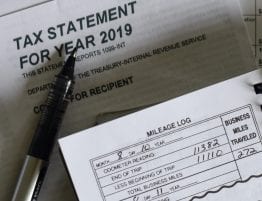
Whom do you contact for tax assistance if you cannot afford a professional tax service? You can read through the information on the IRS website, which might not tell you exactly what to do. Or, you can call the IRS, which most likely doesn’t get you to talk to an agent. Essentially, you are on your own to figure out your tax problem.
Recognizing this problem, Nina Olson, the former National Taxpayer Advocate, who retired last week after 18 years of service, proposed before retiring that the IRS create an anxiety index tool to cultivate trust in the agency and improve compliance with the 2017 tax law.
In her 160-page report to Congress, she wrote that the more anxious a taxpayer scores on the anxiety index, the more he or she should receive help from an IRS employee. Olson has been vocal about the underfunding of the IRS and the unpleasant treatment many low-income taxpayers receive from the IRS.
Forbes elaborates on why paying taxes is a headache for most people and what can be done to ease the pain:
“The Republican overhaul cut rates for individuals and businesses and doubled the standard deduction. It also capped deductions for state and local taxes, or SALT, at $10,000, and introduced a new deduction for small businesses, partnerships and other so-called pass-throughs.
The changes were the biggest tax-code revamp in three decades and spawned a series of new forms to fill out and confusion about withholding calculations. Some taxpayers got smaller refunds this year, the first filing season under the 2017 overhaul, because they had too little taken out of their paychecks last year. Olson has said that it took her three tries to get her withholding correct.
Olson’s proposal is a new twist on perennial criticism of the IRS’s ability to adequately help bewildered taxpayers.
The IRS has long championed a twin policy of customer service and enforcement. But only 25% of taxpayers who called the agency during the recent filing season got through to an IRS employee.
Under commissioner Charles Rettig, the agency in May unveiled a six-year modernization plan that includes goals such as offering callback capability on 95% of agency phone lines by fiscal year 2024 and making it easier for taxpayers to check payment options online. But nowhere in the plan do the words ‘world-class customer or taxpayer service appear,’ said Olson. Her Taxpayer Advocate Service is independent within the IRS.
‘Taxpayer Anxiety’
Instead, the agency has focused on digital services and self-help, a less-costly approach that ‘flies in the face‘ of data that show taxpayers prefer human interaction, Olson wrote.
‘Pushing taxpayers to digital applications only exacerbates the taxpayer anxiety.’
Rettig told a New York University tax conference on Thursday in New York that improving taxpayer service is one of his top priorities. ‘What we’re trying to do is get to best-in-class service equivalent to what people get when they call an online retailer,’ he said.
Olson directed some of her sharpest criticism to a new component of the agency’s 2018-2022 strategic plan that established measuring how well the IRS treats taxpayers by how often they forgo a human interaction in favor of a so-called self-assistance ‘service channel,’ like the IRS website or automated calls with lengthy menu choices.
‘The taxpayer wants answers and instead gets a runaround,’ she wrote. The Trump administration has requested a 5% increase in funding for enforcement and a 6.6% decrease in funding for taxpayer services.
Plan Sought
Under a ‘Taxpayer First Act’ measure that passed Congress and is awaiting President Donald Trump’s signature, the IRS would be required to present a comprehensive customer service strategy to Congress within one year.
‘The IRS should use that requirement as an opportunity to think creatively about better ways to truly put taxpayers first,’ Olson said.
Olson also proposed that the IRS employ an ‘Economic Hardship Indicator’ to use ‘as a factor in prioritizing and categorizing collection cases.’ Currently, the agency ‘doesn’t screen for the ability to pay before it takes collection actions, thereby causing or worsening financial hardships for financially vulnerable taxpayers.’
The agency ‘routinely’ puts delinquent taxpayers into onerous installment agreements that don’t allow them to pay their basic living expenses, she wrote. The Internal Revenue Code, she added, requires the IRS to ‘release any levy where a taxpayer is experiencing economic hardship’ and to craft a payment plan that includes ‘allowable living expenses.’”
Fill out the form for a free and confidential consultation.









